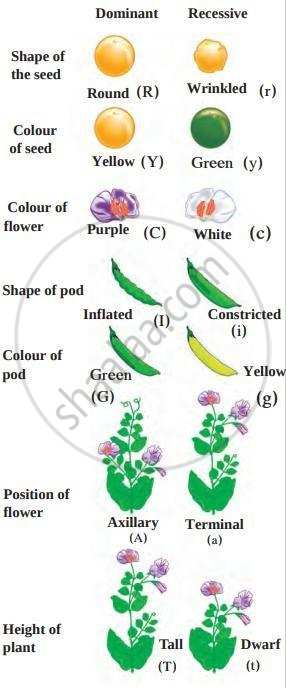Based on his experiments of monohybrid and dihybrid crosses, Mendel proposed three important laws, which are now called Mendel’s Laws of Heredity (Principles or Laws of Inheritance)
1. Law of Dominance
Monohybrid and dihybrid crosses control phenotypic characters through factors, with one member dominating over the other. The law of dominance explains the expression of only one parental character in a monohybrid cross, while both are expressed in a dihybrid cross.
Statement of Law of Dominance:
Crossing two homozygous individuals with contrasting characters results in dominant alleles appearing in F1 and recessive alleles not appearing in F1.
2. Law of segregation (Law of purity of gametes)
The law of purity of gametes states that alleles do not show blending or mixing, and both are recovered as such in the F2 generation. This occurs when the two alleles segregate during gamete formation, preventing the recessive type from appearing in F2. Gametes are always pure for a particular character trait, carrying either a dominant or recessive factor but not both.
Statement of Law of Segregation:
The law states that when hybrids (F1) form gametes, alleles segregate and enter different gametes, resulting in pure gametes with one dominant or recessive allele each, also known as the "Law of Purity of Gametes."
3. Law of Independent Assortment
This law is based on a dihybrid cross and it is a fundamental principle in genetics developed by Mendel. It explains how different genes or alleles separate independently during gamete formation and are randomly united during fertilization. The F2 phenotypic ratio of 9:3:3:1 indicates that the two characters behave independently, leading to different combinations.
Statement of Law of Independent Assortment:
The law states that “when hybrids having two (or more) pairs of contrasting factors (alleles) form gametes, the factors in each pair segregate independently of the other pair.”

